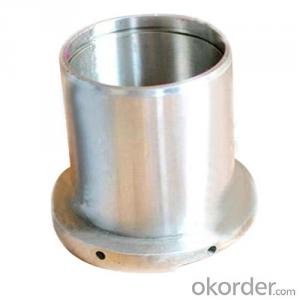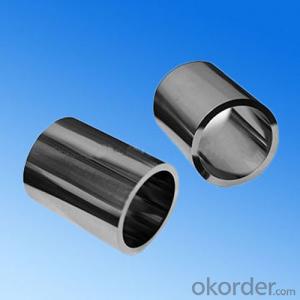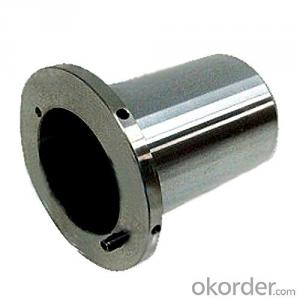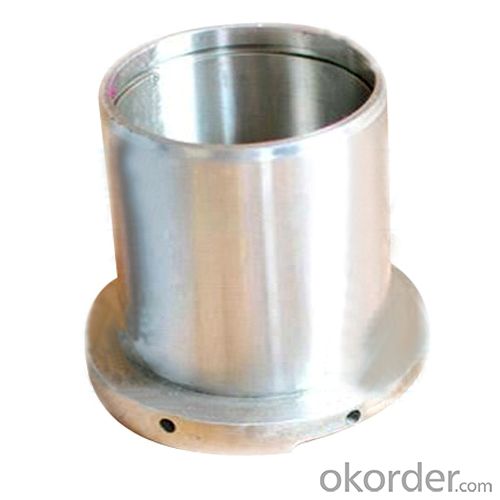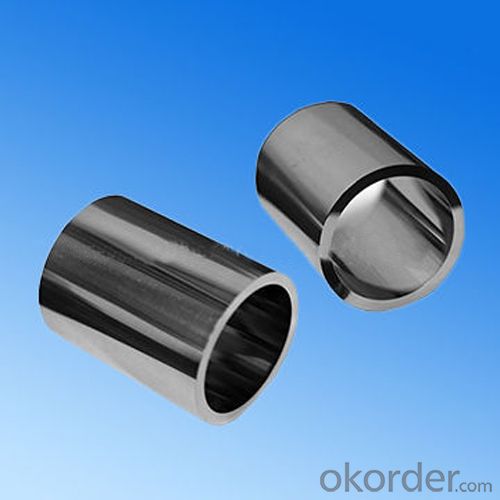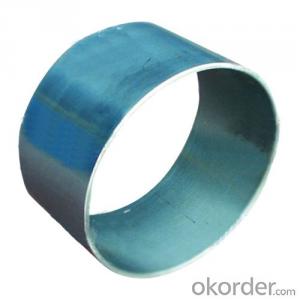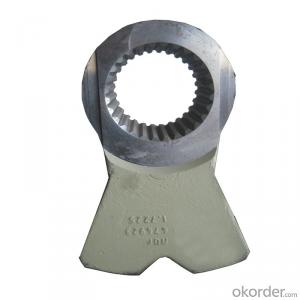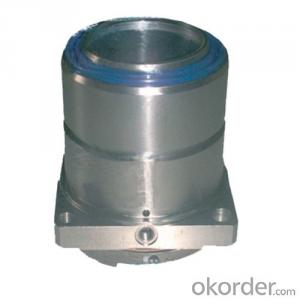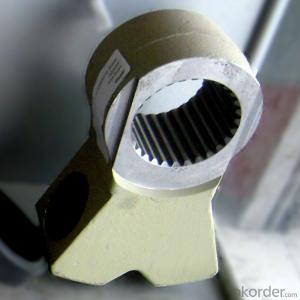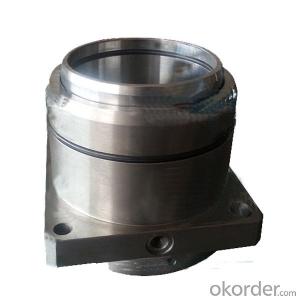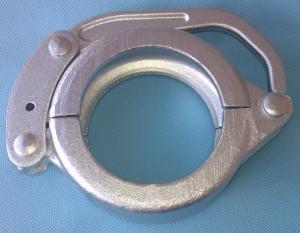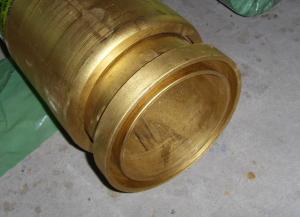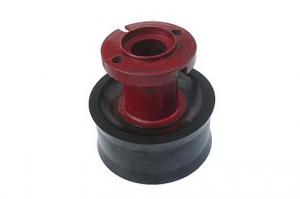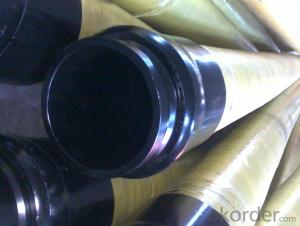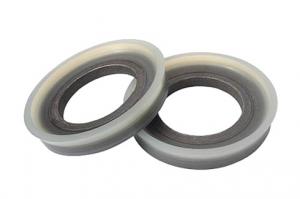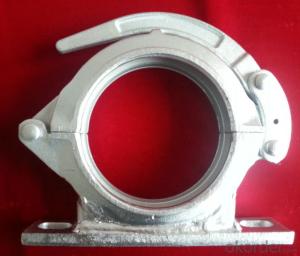Wear Sleeve Q80 Concrete Pump Parts High Quality
- Loading Port:
- Shanghai
- Payment Terms:
- TT OR LC
- Min Order Qty:
- 1 pc
- Supply Capability:
- 1000 pc/month
OKorder Service Pledge
OKorder Financial Service
You Might Also Like
Product information:
Wear Sleeve is the basic material among the frictional materials
They are widely used as the basic components for sealing
And the Wear Sleeve are widely adopted in petrochemical
industry due to its excellent performances such as wear ability, anti corrosion
Wear Sleeve is widely known for its durability and quality
It can withstand high pressure and is resistant to corrosion, so is used in water pumps, oil pumps and various other pumps
Today, Wear Sleeve has been playing an important role in the field of long working parts material
Salient features:
Special carbide grade developed for this application
Good cutting edge retention
Good functional lifespan
Applications:
Wear Sleeve is often used in concrete pumps.
Packing details for tungsten carbide tips:
Standard packing: plastic box inside, carton or wooden box outside
Advantages of our carbide products:
Made from 100% virgin raw material
Produced with advanced equipment
All products go through in-process and final inspection
Free technical service online
About our service:
OEM and ODM orders are welcome
Customized design is available
Reply your enquiry in 24 working hours
Experienced staffs will answer to all your questions in fluent English
Payment terms: we accept T/T, L/C, PayPal, Western Union, Escrow
Regarding T/T payment, the customers need to pay 30% in advance, the balance will be paid off after finished product before shipment
Regarding L/C payment, we just accept the irrevocable L/C, and buyer should pay all handle fee of the bank include our bank handle fee
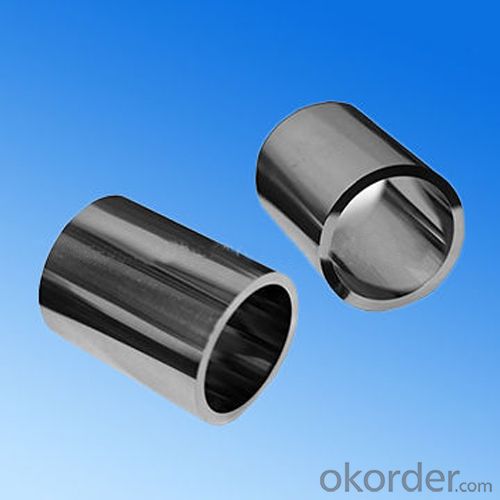
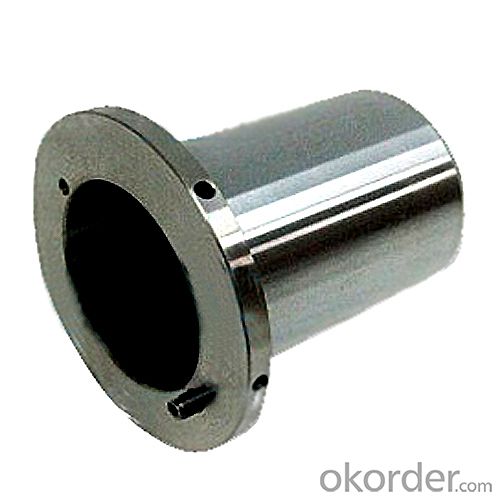
- Q: Are there any specific training or certifications required for handling and installing concrete pump spare parts?
- Handling and installing concrete pump spare parts necessitates specific training and certifications. Given the specialized nature of the equipment and the potential risks involved, individuals must undergo appropriate training and obtain relevant certifications. One must first acquire a comprehensive understanding of concrete pumps' functioning and components. This knowledge can be gained through extensive training programs offered by equipment manufacturers, industry associations, and vocational schools. These programs cover topics such as pump operation, maintenance, troubleshooting, and safety protocols. Furthermore, depending on jurisdiction or industry standards, specific certifications may be necessary. For instance, the American Concrete Pumping Association (ACPA) provides the ACPA Operator Certification, which requires individuals to demonstrate their proficiency in concrete pumping equipment, including the handling and installation of spare parts. Obtaining these certifications ensures that individuals possess the necessary knowledge and skills to handle and install concrete pump spare parts safely and efficiently. It also aids in complying with industry regulations and standards. It is crucial to note that the specific training and certification requirements may vary based on the region, industry, and type of concrete pump utilized. Therefore, it is advisable to consult local regulations and industry guidelines to ensure adherence to the requisite training and certification requirements for handling and installing concrete pump spare parts.
- Q: How can one differentiate between genuine and counterfeit concrete pump spare parts?
- To differentiate between genuine and counterfeit concrete pump spare parts, one should consider several factors. Firstly, it is crucial to purchase spare parts from authorized and reputable dealers or manufacturers. Genuine parts are typically sold through official channels, ensuring their authenticity and quality. Secondly, one should carefully inspect the packaging and labeling of the spare parts. Genuine parts often have clear branding, product numbers, and proper packaging, while counterfeit parts may have inconsistent labeling or poor quality packaging. Additionally, examining the quality and durability of the spare parts is essential. Genuine parts are manufactured to meet strict standards and are more likely to be durable and reliable. Lastly, seeking professional advice or consulting with experts in the industry can provide valuable insights into identifying genuine concrete pump spare parts.
- Q: Can concrete pump spare parts be resold or traded in for new parts?
- Yes, concrete pump spare parts can be resold or traded in for new parts. Many suppliers and manufacturers offer buyback or exchange programs where customers can return their used parts and receive credit towards purchasing new ones. Reselling used parts is also common in the construction industry, as there is a demand for affordable alternatives to new parts. However, the resale value may vary depending on the condition and market demand for specific spare parts.
- Q: Can concrete pump spare parts be used interchangeably between different pump brands or models?
- No, concrete pump spare parts cannot be used interchangeably between different pump brands or models. Each pump brand and model is designed with specific specifications and dimensions, so the spare parts need to be specifically manufactured to fit those requirements. Attempting to use spare parts from a different brand or model may result in compatibility issues or even damage to the pump. It is always recommended to use genuine spare parts from the same brand or model to ensure proper functioning and longevity of the pump.
- Q: What is the purpose of a concrete pump boom?
- A concrete pump boom serves the purpose of efficiently and effectively transferring concrete from the mixer truck to the desired location on a construction site. Typically mounted on a truck or trailer, the boom consists of interconnected sections that can be extended and maneuvered to access otherwise difficult areas. Concrete pump booms offer numerous advantages compared to traditional concrete placement methods. Firstly, they greatly reduce the amount of labor needed for concrete placement. The boom can reach over obstacles like buildings or structures, eliminating the need for manual pouring or crane usage. This saves both time and money during construction projects. Moreover, concrete pump booms enable precise and accurate concrete placement. The boom can be controlled remotely, allowing the operator to position the nozzle exactly where the concrete is required. This ensures a more uniform and evenly distributed concrete placement, resulting in a higher quality finished product. Furthermore, concrete pump booms enhance safety on construction sites. By eliminating the need for workers to physically transport and pour concrete, the risk of injuries and accidents is significantly reduced. The boom also enables concrete placement in hard-to-reach areas, minimizing the need for workers to climb or work at heights, further enhancing safety. In conclusion, a concrete pump boom serves to provide a more efficient, precise, and safe method for transferring and placing concrete on construction sites. Its ability to overcome obstacles, accurately control placement, and reduce labor requirements make it an invaluable tool in the construction industry.
- Q: What are some common issues with concrete pump hoses and how can they be prevented?
- Concrete pump hoses can encounter various problems such as blockages, leaks, and premature wear. To avoid these issues, it is essential to adhere to proper maintenance and usage practices. 1. Blockages: Blockages can occur when concrete or debris hardens inside the hoses. Thoroughly cleaning the hoses after each use is crucial to prevent blockages. Flushing the hoses with water or using a cleaning sponge ball effectively removes any residue or build-up. Additionally, using the correct size and length of hose for the job reduces the risk of blockages. 2. Leaks: Leaks may result from wear and tear, improper connections, or hose damage. Regularly inspecting the hoses is vital to detect any signs of leakage. Any leaks detected should be promptly repaired or replaced. Properly connecting and securing the hose fittings also helps prevent leaks. 3. Premature Wear: Over time, concrete pump hoses can wear out due to factors such as abrasion, bending, and exposure to harsh chemicals. Handling the hoses with care and avoiding dragging them on rough surfaces is important to prevent premature wear. Using protective sleeves or guards provides additional protection against abrasion. Regularly inspecting the hoses for signs of wear and replacing them when necessary is essential. 4. Storage Practices: Improper storage of concrete pump hoses can cause damage and reduce their lifespan. Storing the hoses in a clean and dry environment away from direct sunlight and extreme temperatures is recommended. Properly coiling the hoses and avoiding sharp bends or kinks helps maintain their integrity. 5. Pressure Management: Exceeding the recommended pressure limits can result in hose bursts or failures. Ensuring that the concrete pump operates within the specified pressure range is crucial. Regularly inspecting the pressure gauges and monitoring the pumping process aids in preventing over-pressurization. By adhering to these preventive measures, conducting regular inspections, and performing necessary maintenance, the common issues associated with concrete pump hoses can be minimized. This, in turn, leads to improved performance and increased longevity of the hoses.
- Q: How often should hopper grate levers be inspected or replaced in a concrete pump?
- Hopper grate levers in a concrete pump should be inspected regularly, ideally after every use or at least once a week, to ensure they are in proper working condition. Depending on the wear and tear, they may need to be replaced periodically to maintain the efficiency and safety of the pump.
- Q: How often should hopper cylinder seals be replaced in a concrete pump?
- Hopper cylinder seals in a concrete pump should be replaced as soon as signs of wear or damage are observed. Regular inspection and maintenance can help identify the need for replacement, but the frequency ultimately depends on factors like usage, environmental conditions, and the quality of the seals. It is recommended to follow the manufacturer's guidelines and consult with professionals to determine the appropriate replacement schedule for hopper cylinder seals in a concrete pump.
- Q: Can concrete pump spare parts be inspected for dimensional accuracy before installation?
- Certainly, before installation, it is possible to examine concrete pump spare parts to ensure their dimensional accuracy. It is crucial to verify that the spare parts meet the necessary specifications and dimensions for proper functioning and compatibility with the concrete pump system. One can perform this inspection using a range of techniques, including visual examination, precise instrument measurements, and comparing dimensions to the manufacturer's specifications. This procedure aids in detecting any disparities or deviations in the spare parts' dimensions, enabling adjustments or replacement if needed. By inspecting spare parts for dimensional accuracy prior to installation, one can guarantee the seamless operation and durability of the concrete pump system.
- Q: How often should hopper grate handles be inspected or replaced in a concrete pump?
- Hopper grate handles in a concrete pump should be inspected regularly for any signs of wear and tear or damage. The frequency of inspection and replacement may vary depending on the usage and condition of the equipment. It is recommended to inspect the hopper grate handles at least once a month or after every 500 hours of operation, whichever comes first. During the inspection, ensure that the handles are securely attached to the hopper grate and check for any cracks, bends, or other structural issues. If any damage is detected, it is advisable to replace the handles immediately to prevent any accidents or further damage to the equipment. It is also important to follow the manufacturer's guidelines and recommendations for maintenance and replacement of hopper grate handles. By regularly inspecting and replacing the handles as needed, you can ensure the safe and efficient operation of the concrete pump.
Send your message to us
Wear Sleeve Q80 Concrete Pump Parts High Quality
- Loading Port:
- Shanghai
- Payment Terms:
- TT OR LC
- Min Order Qty:
- 1 pc
- Supply Capability:
- 1000 pc/month
OKorder Service Pledge
OKorder Financial Service
Similar products
Hot products
Hot Searches
Related keywords
